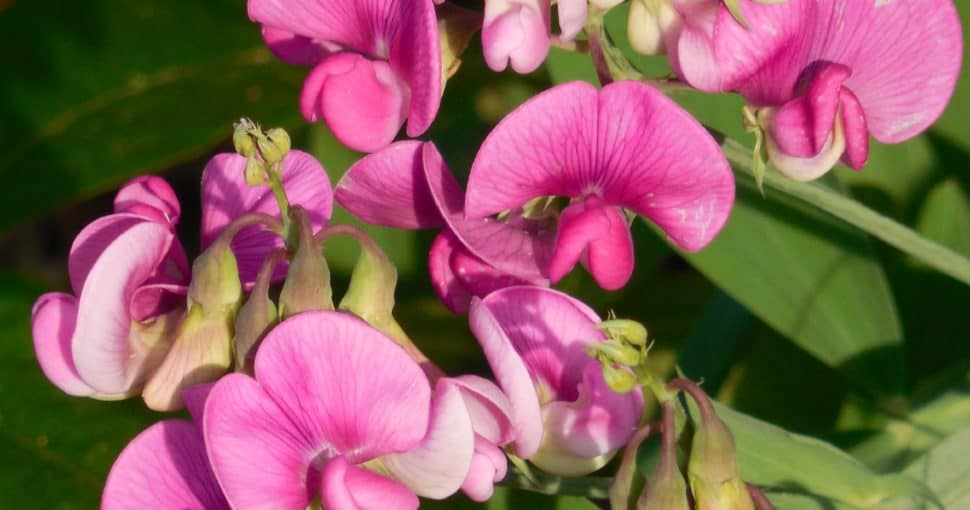Pennsylvania has a diverse landscape that grows many varieties of flora, including a large variety of vines, trees, and shrubs. Some of these plants can be quite poisonous and cause several symptoms when touched or consumed. Read on to discover the poisonous plants in Pennsylvania!
Contents
- 1. Poison Hemlock (Conium maculatum)
- 2. Creeping Thistle (Cirsium arvense)
- 3. Giant Hogweed (Heracleum mantegazzianum)
- 4. Poison Ivy (Toxicodendron radicans)
- 5. Poison Oak (Toxicodendron diversilobum)
- 6. Virginia Creeper (Parthenocissus quinquefolia)
- 7. Wild Parsnip (Pastinaca sativa)
- 8. Morning Glory (Ipomoea)
- 9. Oleander (Nerium oleander)
- 10. Common Boxwood (Buxus sempervirens)
- 11. Hortensia (Hydrangea)
- 12. English Yew (Taxus baccata)
- 13. Wolf’s Bane/Monkshood (Aconitum)
- 14. White Baneberry (Actaea pachypoda)
- 15. Fly Poison (Amianthium muscaetoxicum)
- 16. Fiddleneck (Amsinckia intermedia)
- 17. Wild Indigo (Baptisia)
- 18. Marsh Marigold (Caltha palustris)
- 19. Autumn Crocus (Colchicum autumnale)
- 20. Irises (Iris)
- 21. Wild Pea (Lathyrus spp.)
- 22. Flax (Linum usitatissimum)
- 23. Red Puccoon (Sanguinaria canadensis)
- 24. White Snakeroot (Ageratina altissima)
- 25. Soapwort (Saponaria officinalis)
Plants are a beautiful part of nature that makes them worth exploring. However, not all plants that flower, have pretty leaves, or look wonderful are safe for you to touch or consume in any way. Some of these plants can be quite poisonous. Pennsylvania has its fair share of such toxic plants.
The poisonous plants in Pennsylvania include Creeping Thistle, Poison Oak, Poison Hemlock, English Yew, Morning Glory, and more. Even though some of these plants might appear harmless and inviting, it’s best to observe caution when handling them to keep yourself from experiencing dermatitis and prevent accidental ingestion, resulting in a whole host of symptoms.
If you are aware of all the poisonous plants in your state and ways to recognize them, it will increase your wilderness and flora knowledge and enable you to keep yourself and your loved ones safe from an unwelcome rash or various other poisoning symptoms.
So, without ado, let’s look at 25 poisonous plants in Pennsylvania:
1. Poison Hemlock (Conium maculatum)
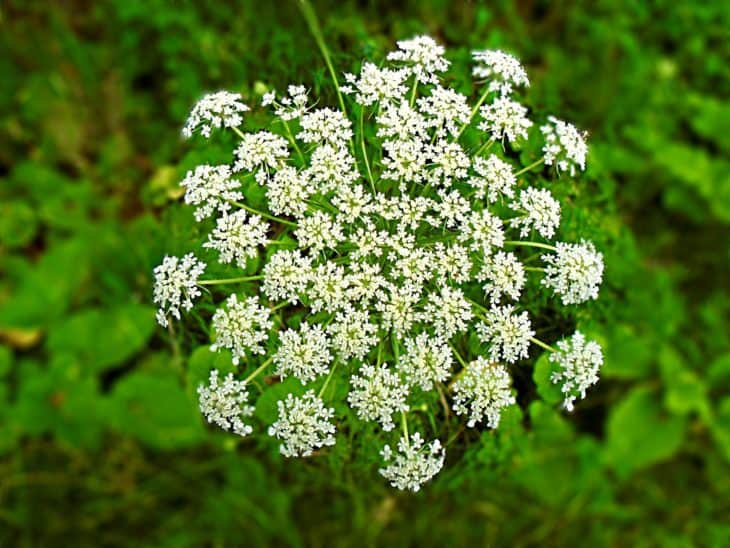
Poison Hemlock is a toxic biennial native to Europe and North Africa. This aggressively-spreading plant has naturalized the world over and grows alongside rivers, streams, roads, and vacant lots. It’s an herbaceous weed that contains toxic alkaloids and coniine. It can result in dizziness, paralysis, pupil dilation, and death when ingested. It has umbrella-type masses of small, white blooms, stems with red-purple streaks, and bright green, fern-like leaves.
2. Creeping Thistle (Cirsium arvense)
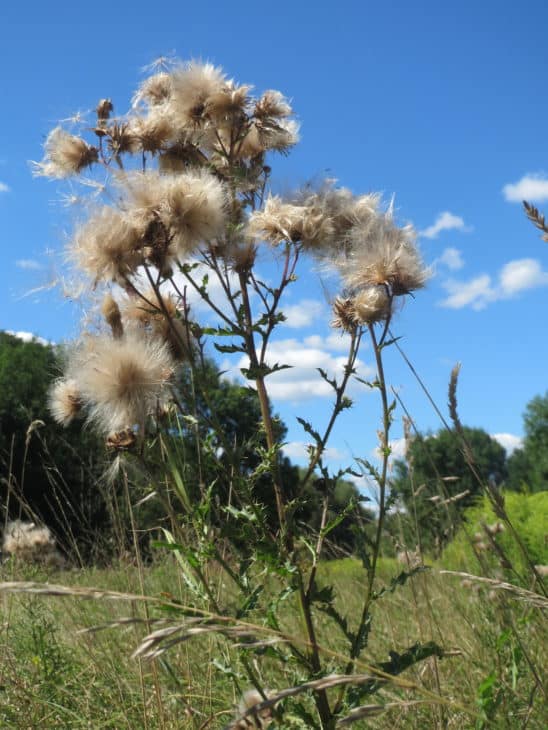
Creeping Thistle grows on field edges, rough grassland, and roadside verges. It forms large colonies and is considered to be a weed. This plant has divided, spiny leaves, wingless stems, lilac-pink, tiny blooms that grow atop small cylinders of spiny bracts, and clusters of fluffy, wind-borne summer seeds. Creeping Thistle plants can cause a burning sensation upon contact and ingestion.
3. Giant Hogweed (Heracleum mantegazzianum)
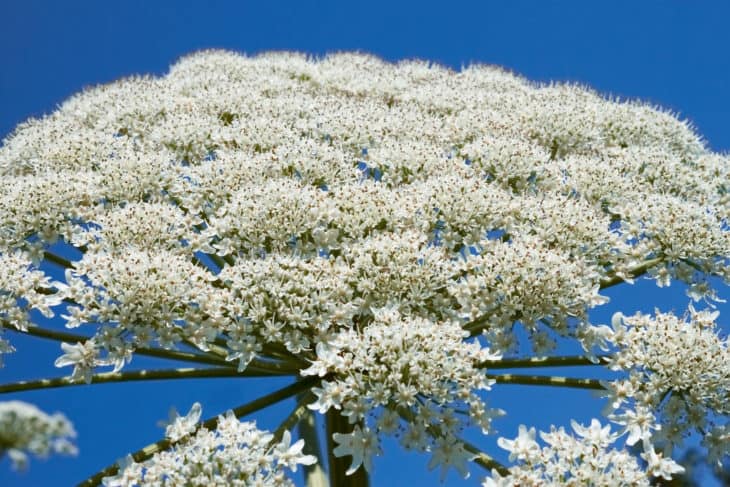
Giant Hogweed is a Southern Russian and Georgian native that grows in free-draining, moist soils and ample sunlight alongside streams, yards, roads, and rivers. This invasive plant has compound masses of white blooms, hollow, ridged stems, and large, incised, compound leaves. Touching a Giant Hogweed and its sap can cause itchiness, blistering, and swelling. The reaction can last months and make the affected area UV-sensitive.
4. Poison Ivy (Toxicodendron radicans)
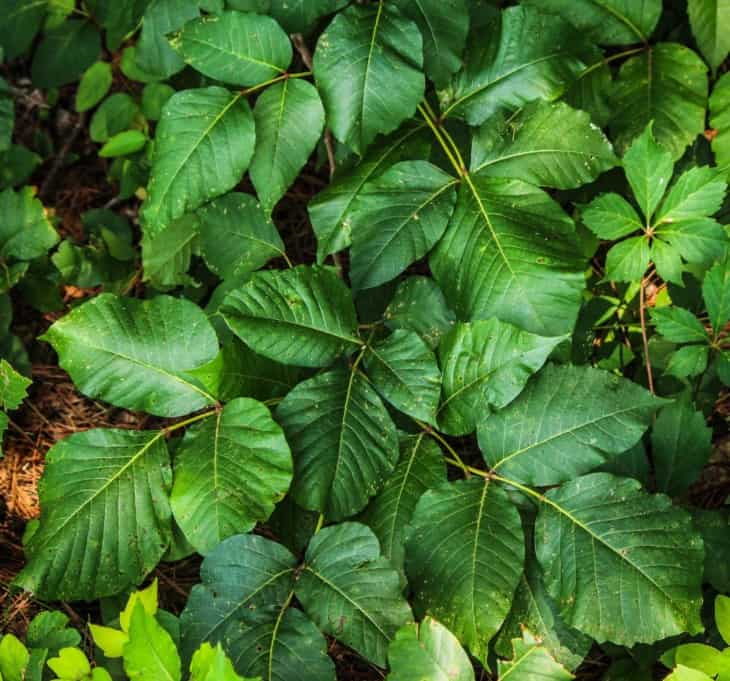
Poison Ivy is a toxic eastern North American native with a variable growth. It grows yellow or green blooms, greenish drupes, and hairy, serrated leaves that turn red, orange, and yellow in autumn. This climbing vine or weed shrub contains urushiol, an oleoresin that causes dermatitis. Touching Poison Ivy results in itchiness, rash, and inflammation. It can also cause oozing blisters in people more susceptible to it.
5. Poison Oak (Toxicodendron diversilobum)
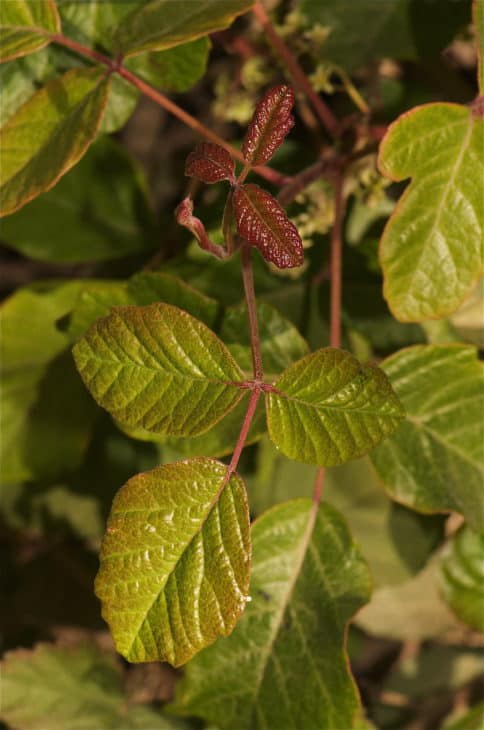
Poison Oak is a western North American native that grows as an upright vine or a low-growing shrub, depending on how much sunlight it gets. It features lobed, oak leaf-type leaves that turn red or orange-brown in autumn. This plant contains a potent allergen called urushiol. If you touch Poison Oak’s bruised leaves, the sap will cause you to develop itchy, inflamed, and swollen skin.
6. Virginia Creeper (Parthenocissus quinquefolia)
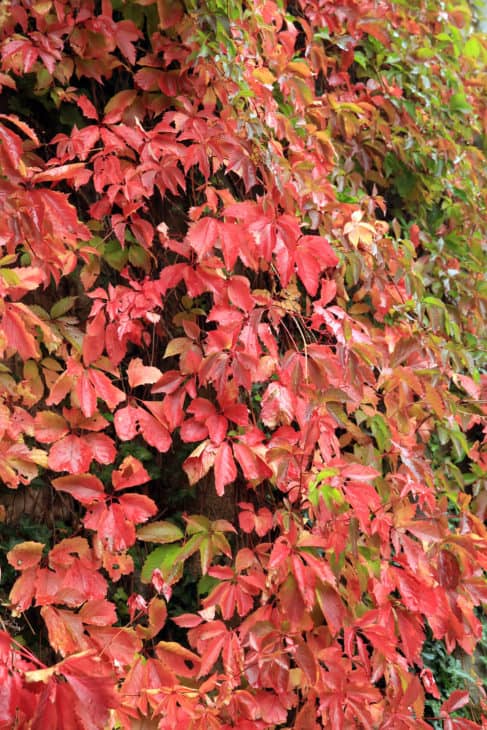
Also known as American Ivy, Virginia Creepers are woody, high-climbing, deciduous vines native to central and eastern North America. They have dull green, palmate, toothed leaves that turn purple, red, and mauve in fall. This plant features masses of small, green-white blossoms that give way to bluish-black, round, fleshy berries that are toxic when ingested. Almost all parts of this plant contain raphides, which cause skin irritation.
7. Wild Parsnip (Pastinaca sativa)
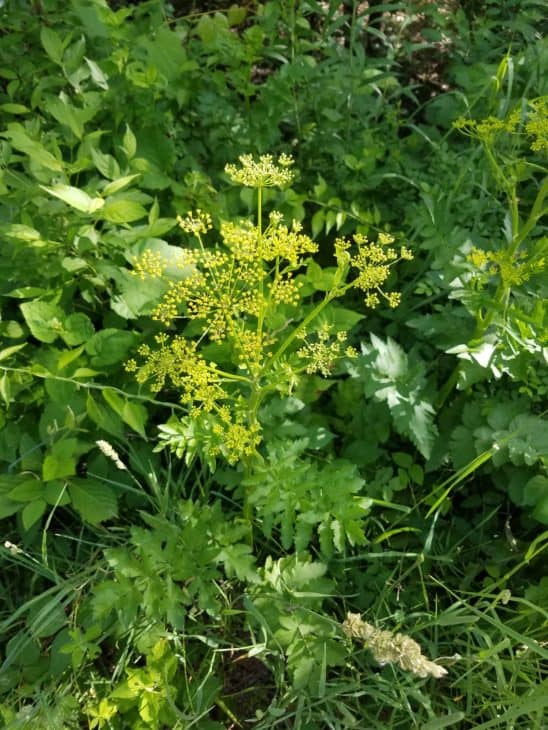
Wild Parsnip is a biennial or perennial herb that features hairless, pinnate, broad foliage and hundreds of small yellow blossoms that grow in loose, compound umbels. This plant produces leaves, blooms, stems, and fruits that cause intense rash, blistering, and burning when you come into contact with them during the day. Wild Parsnip causes a chemical burn activated by your skin’s sensitivity to sunlight.
8. Morning Glory (Ipomoea)
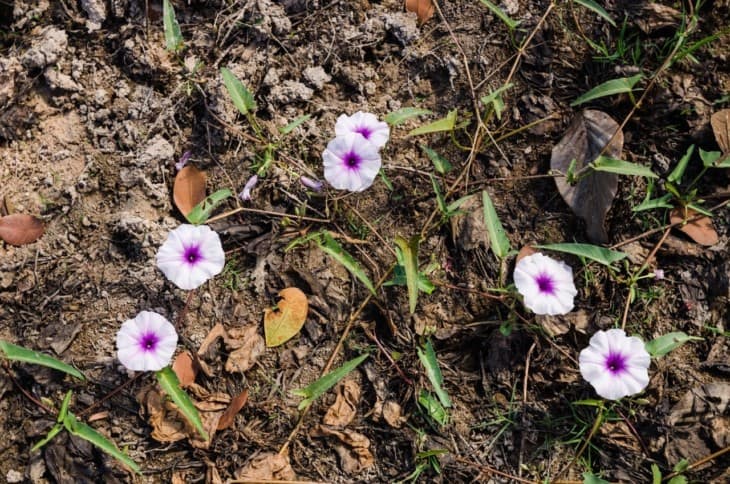
Native to Central America and Mexico, Morning Glory is a fast-growing annual vine with brightly colored, trumpet-shaped blooms. These flowers can be white, purple, blue, or pink. They have a slight fragrance and are favored by hummingbirds and butterflies. The buds twirl up tightly and unfold when the morning sun hits them, which explains the name. Morning Glory seeds are poisonous, and ingesting them can cause varied symptoms, such as diarrhea and hallucinations.
9. Oleander (Nerium oleander)
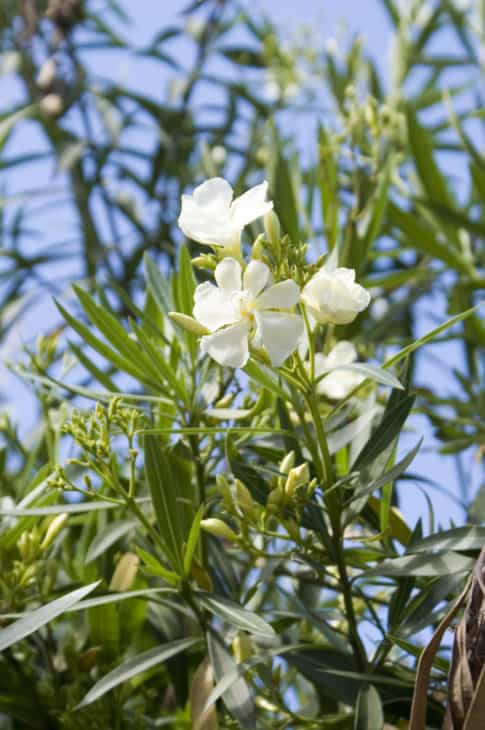
Oleander is an evergreen, blossoming, an ornamental shrub from the Mediterranean. It has a shrub-like, tall habitat with lanceolate, thick foliage. Oleander is a flowering plant that bears masses of yellow, white, and rose-colored blossoms. It produces a poisonous milky sap with toxic cardiac glycosides. Consuming Oleander can result in death as the toxin will slow down your heart rate.
10. Common Boxwood (Buxus sempervirens)

Common Boxwood is a slow-growing, adaptable, rounded, evergreen shrub with simple, feathery, lustrous, and oblong to elliptic dark green leaves. It is an Asia, European, and northern African native with inconspicuous, creamy yellow, fragrant, and apetalous spring blooms and globose, brown or copper capsules. Common Boxwood’s leaves contain a toxic alkaloid that causes dizziness, nausea, vomiting, convulsions, and respiratory failure. Contact with the sap can cause skin irritation.
11. Hortensia (Hydrangea)
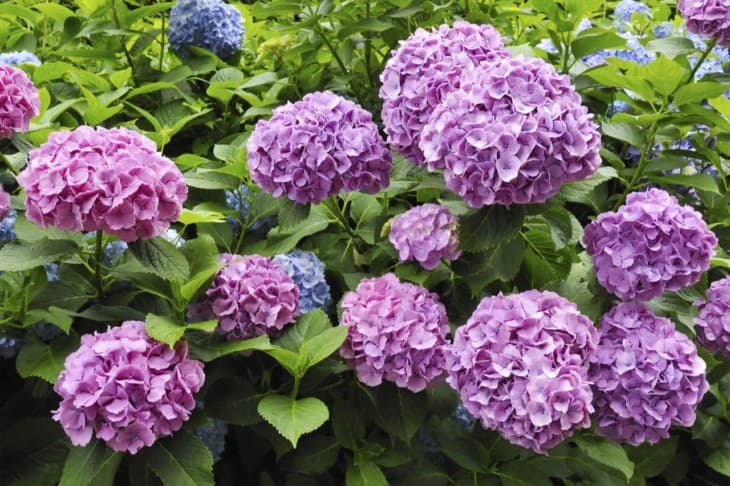
Hortensia or Hydrangea is a rapidly-growing shrub with attractive clusters of colorful blossoms that grow in lavender, red, clear blue, vibrant pink, and frosty white shades. This plant is popularly grown throughout the world even though it’s poisonous to animals and humans. All parts of Hortensia contain cyanogenic glycoside. Consuming it can cause diarrhea, vomiting, and nausea. Coming into contact with this plant results in dermatitis.
12. English Yew (Taxus baccata)
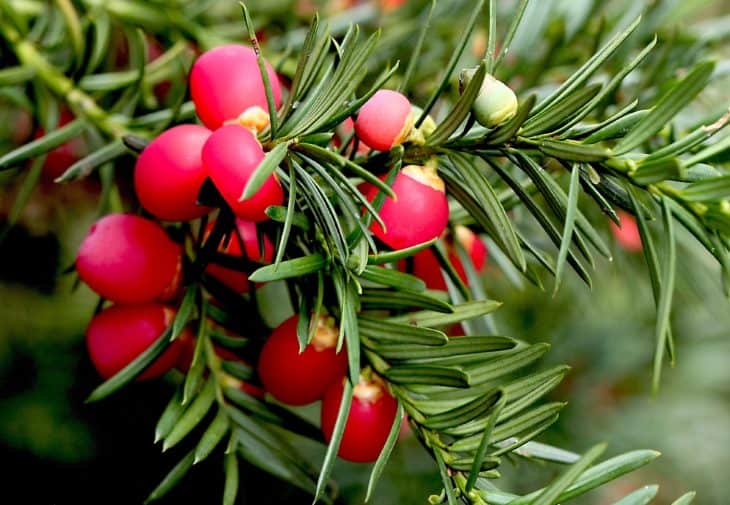
Native to Europe, North Africa, and West Asia, English Yew is an evergreen conifer tree or shrub. It has wide-spreading branches, scaly, reddish-brown bark, and needle-like, linear, shiny dark green leaves with a yellowish-green underside. This non-flowering plant grows a yellowish, cone-like structure on the axils of its leaves and red, fleshy, cup-shaped berries. The leaves, stems, seeds, and bark of English Yew are highly poisonous. Ingesting them can cause vertigo, vomiting, difficulty breathing, low BP, respiratory failure, and death.
13. Wolf’s Bane/Monkshood (Aconitum)
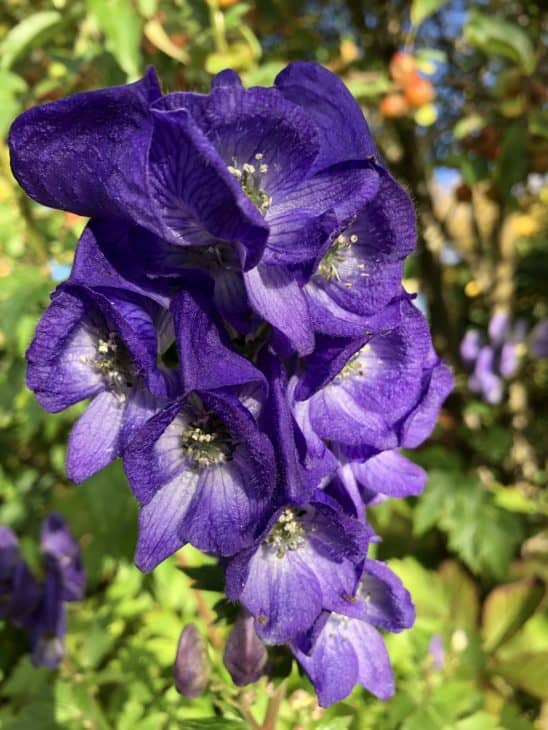
Wolf’s Bane is a genus of over 200 attractive perennial herbs that grow in rich soils and partial shade in the North Temperate Zone. All Monkshood are exceptionally poisonous. They have spike-like clusters of hood-shaped blossoms, leaves with fingerlike lobes, and thick, tuberous roots. Their flowers can be blue, purple, yellow, or white. All parts of this plant are poisonous, and ingestion can cause a burning sensation in the mouth, vomiting, irregular heartbeat, nausea, stomach pains, and difficulty in breathing,
14. White Baneberry (Actaea pachypoda)
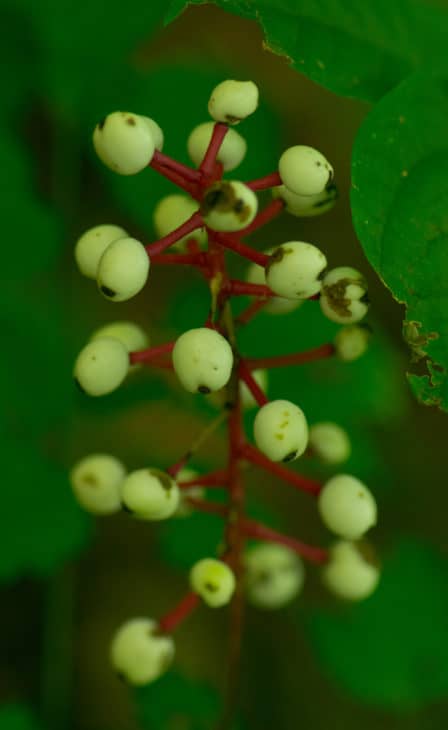
White Baneberry is an adaptable, thick rhizome-forming, non-invasive, and perennial herb native to Eastern North America. It grows racemes of fragrant, showy, dome-shaped, white, yellow, and purple blooms.
White Baneberry has compound, green, deciduous leaves. It grows in rich woods, ravines, forests, and woodlands. All parts of White Baneberry are poisonous, especially the roots and berries. If ingested, it can cause severe mouth pain, stomach cramps, diarrhea, headache, dizziness, hallucinations, and death.
15. Fly Poison (Amianthium muscaetoxicum)
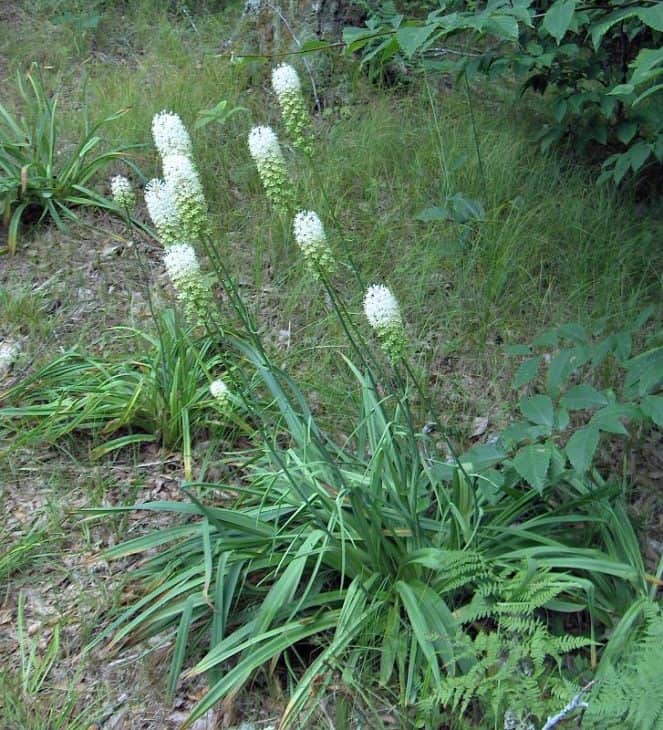
Fly Poison is a highly poisonous plant that contains toxic alkaloids. Also known as Stagger Grass, Fly Poison grows in moist weeds, meadows, savannas, and sandhills. It has showy, green or white, star-shaped blooms and simple, green, lanceolate, veined leaves. Fly Poison can be fatal when ingested. It can cause vomiting, excessive salivation, clumsiness, weakness, immobility, breathing difficulties, and hemorrhages.
16. Fiddleneck (Amsinckia intermedia)
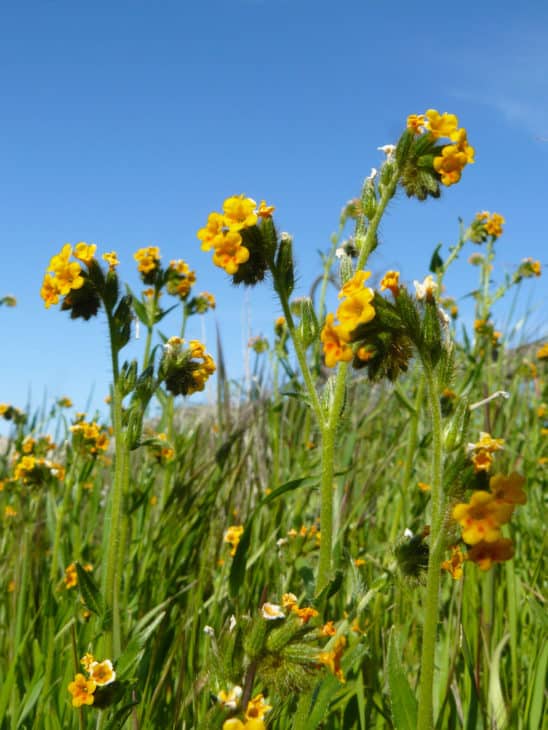
Fiddleneck is a species of plant in the Borage family. It is a common type of Fiddleneck in western North America as it is found in the US, Mexico, and Canada. This annual herb features a terminal flowering whorl, which is shaped like the head of a fiddle or violin. It features dark yellow, orange, or yellow-orange blossoms. It contains toxic alkaloids, and ingestion can cause multiple symptoms, including sweating, diarrhea, muscle spasms, tachycardia, and more.
17. Wild Indigo (Baptisia)
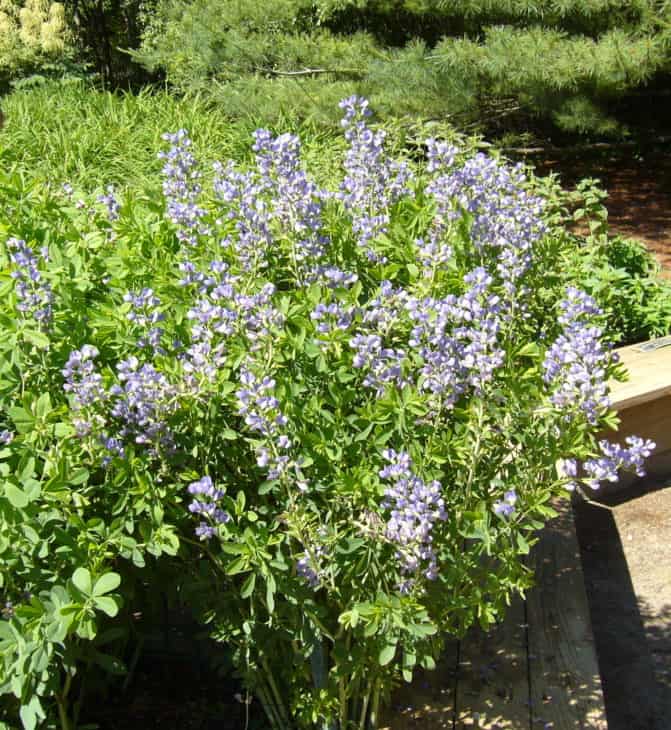
Also known as False Indigo, Wild Indigo is a genus of erect, herbaceous perennials native to open woods and woodland borders. Wild Indigo plants are tough, drought-tolerant plants with attractive, pea-shaped, blue, white, yellow, or purple-blue blooms that contrast with their light green, three-parted leaves that turn black when drying. They feature black, stalked, inflated pods with seeds. All parts of these plants are mildly poisonous and can cause nausea, diarrhea, and vomiting.
18. Marsh Marigold (Caltha palustris)
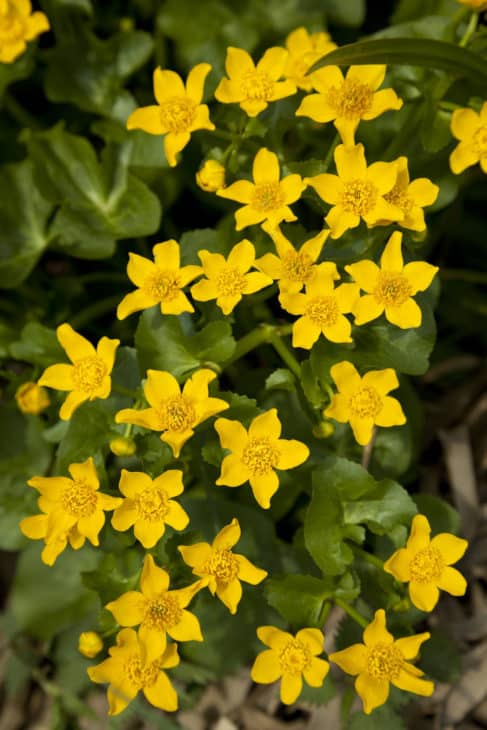
Marsh Marigold is a rhizomatous, herbaceous perennial native to the US. It features striking gold-yellow blooms that grow on tall, hollow, branching stems and give way to seed pods that split open. This low-maintenance, deer-resistant plant grows green, dentate, alternate, heart-shaped leaves that are poisonous. Ingesting Marsh Marigold’s leaves can cause burning of the throat, bloody diarrhea, vomiting, fainting, dizziness, and convulsions.
19. Autumn Crocus (Colchicum autumnale)
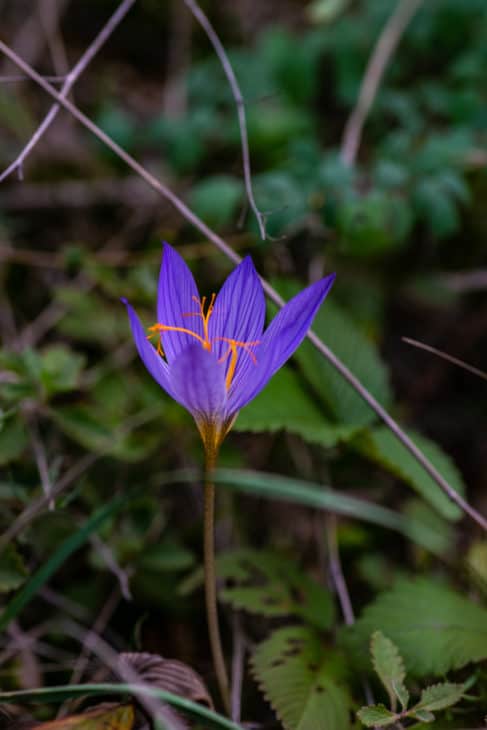
Autumn Crocus is a highly toxic perennial herb native to southern Europe. It features basal, slender leaves and tubular, purple-pink to white autumn flowers that attract butterflies and bees. This plant grows in damp woodland clearings and meadows in rich soils. All parts of Autumn Crocus contain colchicine. When ingested, it can cause bloody vomiting, diarrhea, cramping, shock, multi-organ damage, respiratory failure, and more damage.
20. Irises (Iris)
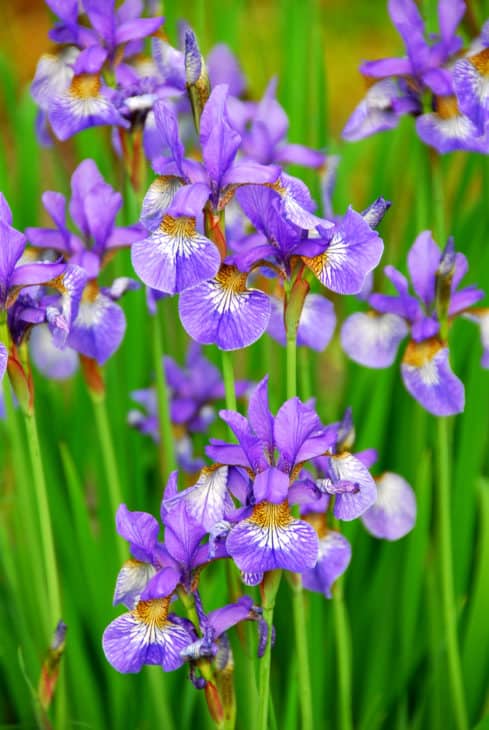
Iris is a genus of about 300 flowering plants that thrive in the Mediterranean, Central Asian regions, and North Temperate Zone. Irises are bulbous or rhizomatous plants with creeping, thick underground stems. Some Irises have short, conical stems, while others have robust, ringed, horizontal stems. Their flowers have three broad stigma branches, three sepals, and three petals. It is bulbs contain toxic compounds that cause diarrhea, nausea, vomiting, adnominal pain, and fever.
21. Wild Pea (Lathyrus spp.)
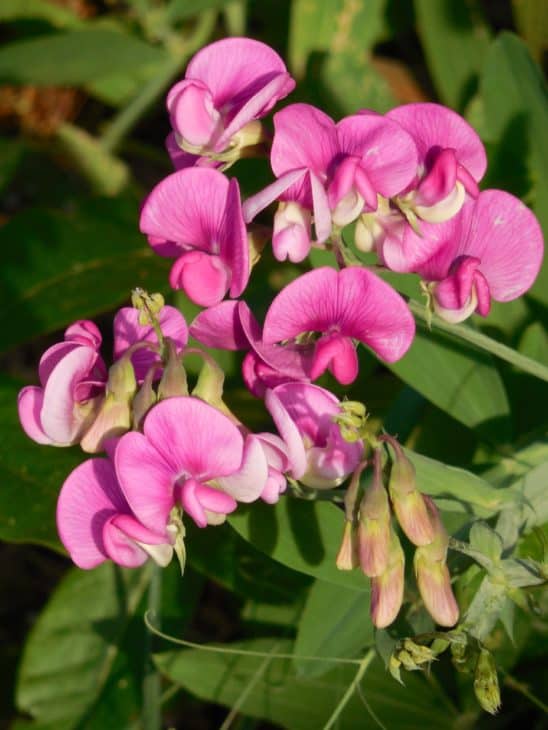
Also known as Everlasting Pea, Wild Pea is a genus of perennial or annual herbaceous vines with showy blooms and winged stems. These vines are exceptional trellis and wall climbers. They have linear, ovate, alternate, compound, green leaves and grow pink, white, or golden, showy, pea-sized blooms. Wild Pea fruits and seeds are poisonous in large quantities. They can cause paralysis and shallow breathing, weaken the pulse, and result in convulsions.
22. Flax (Linum usitatissimum)
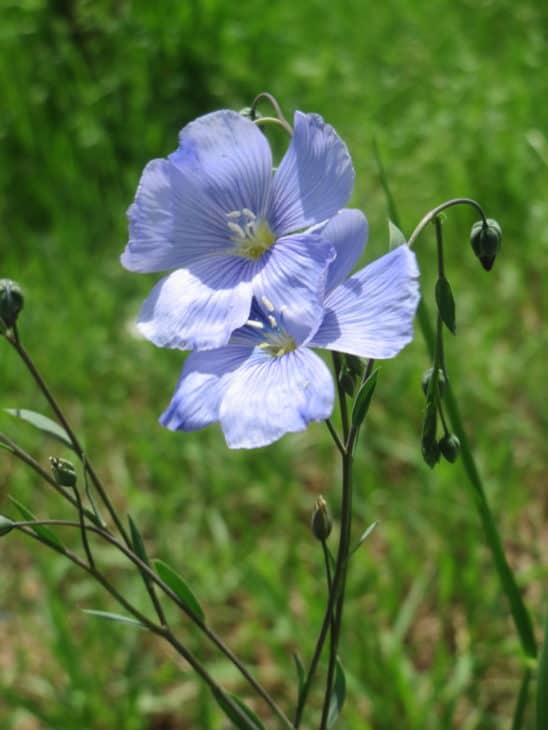
Native to Europe, Flax is a slender, annual, erect, poisonous herb. It features simple, narrow, alternate, green leaves with smooth margins. Flax bears attractive, pale blue, 5-parted, spreading blooms. Its leaves, fruits, bark, blooms, roots, seeds, and sap contain cyanogenic glycoside, which causes skin irritation. Ingesting the plant can cause difficulty in breathing, convulsions, and paralysis.
23. Red Puccoon (Sanguinaria canadensis)
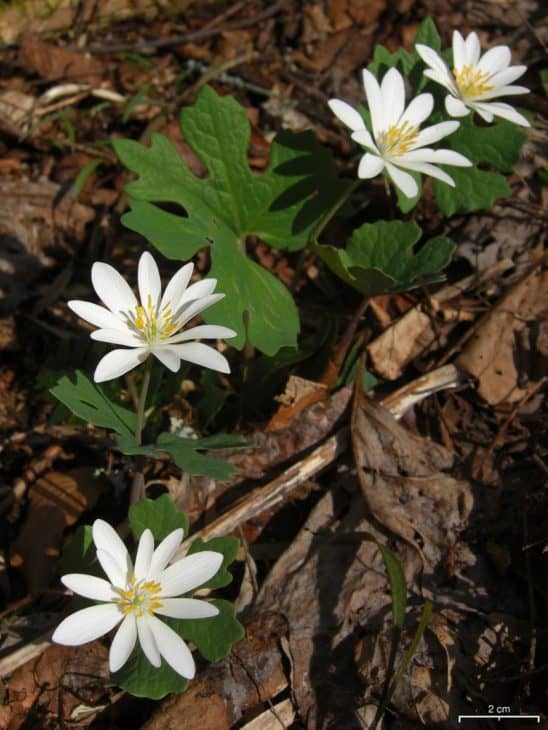
Also known as Bloodroot, Red Puccoon is an Eastern and Midwestern North American native. It produces cup-shaped, shiny, white blossoms with bright yellow stamens and eight petals. Even though Red Puccoon is a toxic plant, it’s used for herbal medicine. It has large, rounded, veiny, blue-green foliage, a reddish stalk, and fleshy elaiosomes that contain seeds.
24. White Snakeroot (Ageratina altissima)
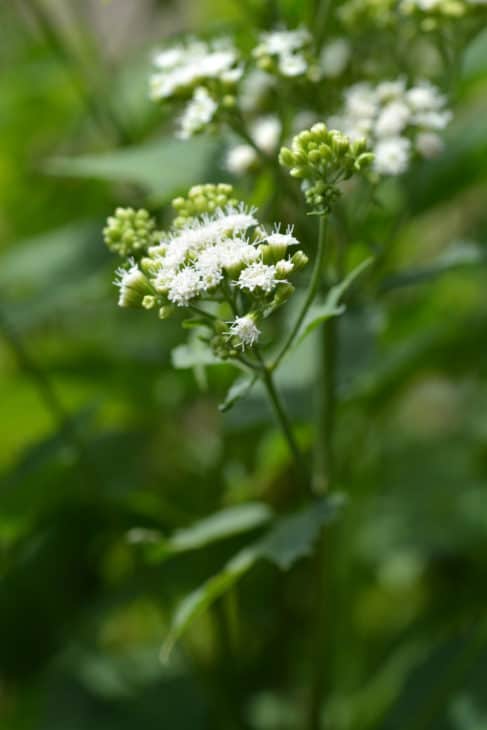
Native to North America, White Snakeroot grows in thickets, rocky woods, rich wood margins, and rocky areas. It grows flattened, loose clusters of small, fluffy, white blossoms. This weedy perennial features lance-shaped, long-stalked, sharp-toothed, oval-elliptic, dark green leaves. The leaves and stems of this plant contain tremetol, which is toxic to humans and animals. It can cause muscular degeneration, tremors, loss of coordination, and irregular heart rate.
25. Soapwort (Saponaria officinalis)
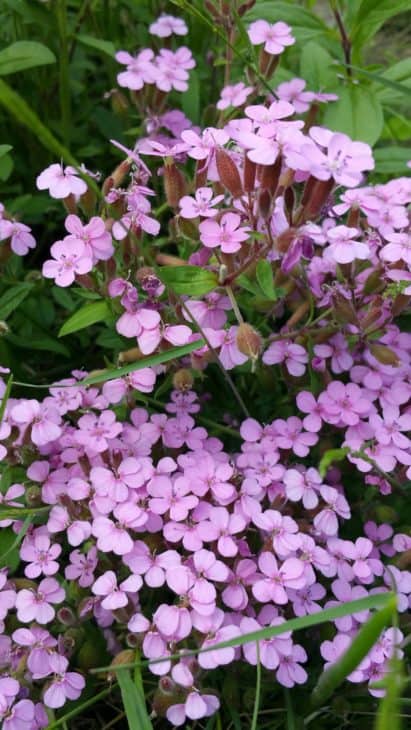
Also known as Bouncing Bet or Lady by the Garden Gate, Soapwort is a European native perennial herb. It grows alongside railroad tracks, roads, and waste sites. This upright perennial grows clusters of pink, white, gold, or rose blossoms and simple, palmate lanceolate leaves. Soapwort gets its name from the saponins in its sap which lathers. The roots and seeds of this plant can cause vomiting, diarrhea, and nausea.

